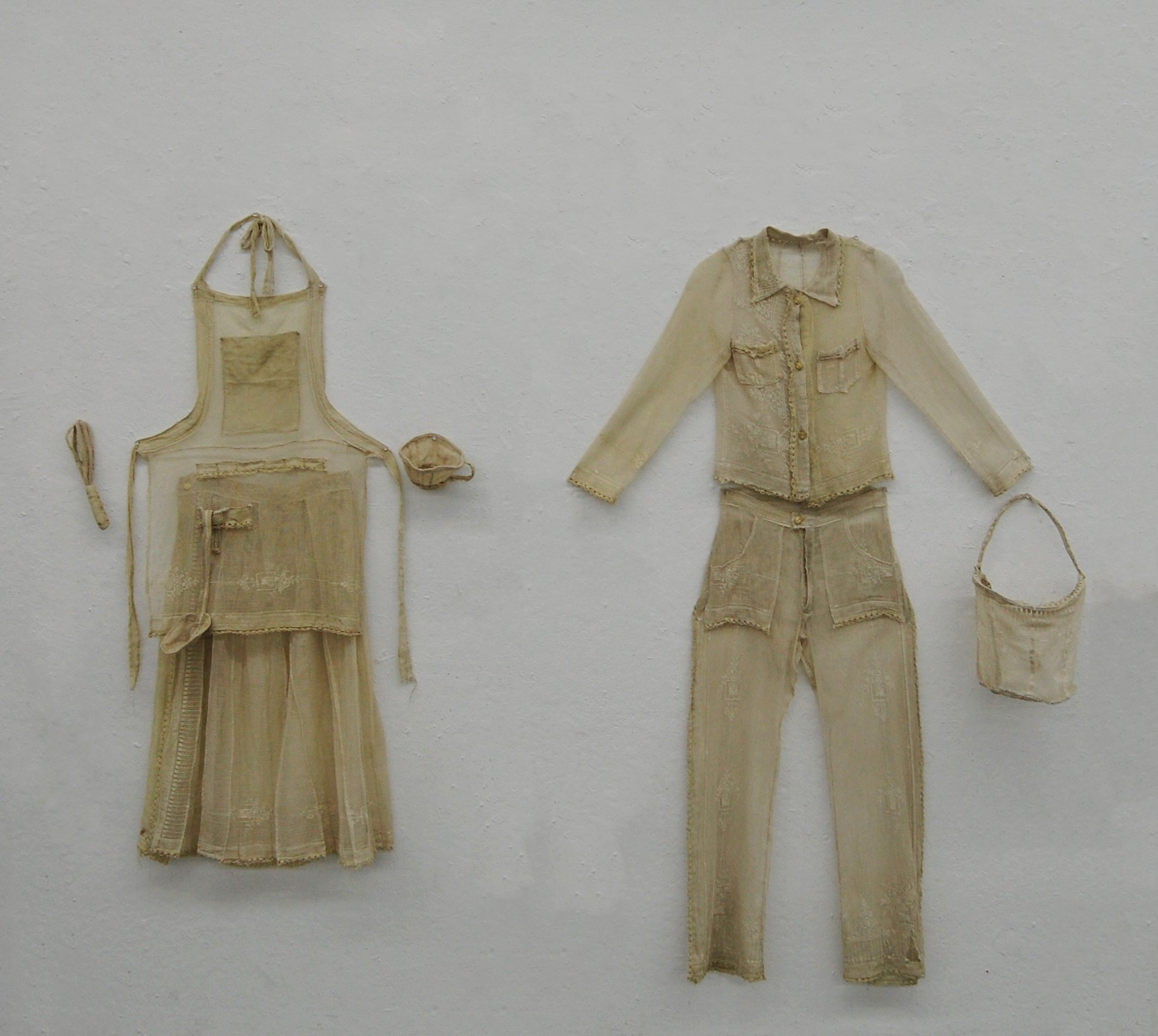Lacemaking, as a practice, was one of the few ways that women could earn a profit. Passed down through generations, lacemaking provided women with a sense of community in their often lonesome and isolated lives. While this craft held economic value, however, the rest of the labor which women performed as part of their daily routines—including housework and family rearing—was overlooked and taken for granted. What does it mean that the form of women’s work that was most valued was the one that resulted in the least practical of their products? Milk Woman aims to highlight this absurdity, while also expressing the sense of constraint that women felt in their proscribed gender roles.






